Picking Earphones and Speakers, A Guide to Better Audio
無中文版
I've read, experimented and learned a lot about audio since upgrading my home speaker setup to a surround sound one and switching my pre-packaged earphones to better quality ones. So, I thought I would share the information I've gathered so that more people can enjoy their favourite music (and perhaps movies too) at its best.
I've tried to keep all the technical details to a minimum as best as I could and highlighted the key details that should help you understand why you might want to invest in some more expensive equipment. Any audio enthusiasts who read this and would like to make some comments, feel free to enlighten me if anything doesn't read right.
Three things contribute to the sound quality of your music...
- The source of the music.
- The quality of your listening equipment e.g. earphones, headphones or speakers.
- The quality of the output signal from your music player.
Source of the Music
These days, most people listen to digital music for various reasons mainly for conveniency so that you don' t have to carry lots of CDs around with you. Such digital music files come in two forms - Lossy and lossless.
Most of you will most likely be listening to lossy music which come in the form of (but not limited to) MP3 and AAC files.
Lossy Music Files
MP3s are probably the earliest form of digital music around and was designed to keep file sizes to a minimum back in the days when USB memory chips were at a premium and people were still using floppy disks at offices, university or college to store files.
However, in order compress files a compromise had to be made hence why it's called "lossy". MP3s work by using a set of rules to strip out all the sound frequencies that are outside of the human hearing range i.e. anything lower than 20Hz or greater than 20,000Hz.
This automated process when converting CDs to MP3s means that the sounds removed aren't always the ones we can't hear. Furthermore, once the forementioned sounds are removed, the remaining sounds are packed together and much like JPEG image files, large similar areas of sounds are replaced with a single average pattern to compress the files even further, resulting in even more sound loss - Especially at the lower 128kbps MP3s.
Lossless Music Files
With microchips becoming ever cheaper and large 32GB USB drives the size of a coin available these days, it's only natural people made use of the extra capacity and allow our music to be stored at higher quality.
Each track on a CD can reach a maximum bitrate of approximately 1411kbps depending on the music you're listening to and that is why we now have lossless formats such as FLAC, APE or Apple Lossless files available, allowing music to be stored at such higher bitrates of over three times higher than the highest setting MP3s can go.
The above was captured from Tenmon's "Through The Years and Far Away" performed by the Australian, Eminence Symphony Orchestra. As you can see on the right, the loss of audio is very apparent with large sections of the peaks clipped off when converted to MP3 even at its highest quality setting.
If 320kbps looks like this, what do you think you're missing out on with the old 128kbps MP3s when a greater level of compression is used?
On the other hand, lossless file formats retain all sound frequencies but still use a different kind of algorithm to compress file sizes - Everyone likes to get the most out of everything after all, including storage!
But why would there be frequencies beyond the human hearing range in music? I'll explain in the next section or if you wish, you can jump straight to the part about "frequency response".
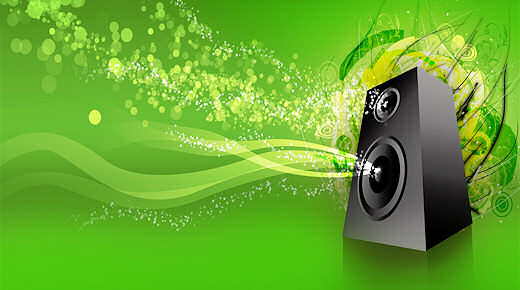
The Quality of Your Earphones/Headphones
Even if your sound files are at their best, you still need good listening equipment to enjoy the full sound spectrum.
If you have a look at earphones and headphones (also referred to as "cans") in the shops or online and then look at their specifications listing, you'll usually see the following...
- Drivers
- Frequency Response
- Sensitivity/Signal-to-Noise Ratio
- Impedance
- Power Handling
Frequency Response & Drivers (Tweeters, Mid-range, Woofers)
As the name suggests, these circular components are what reproduces the sound of your music. The range of sounds that these drivers can reproduce is known as the "frequency response" and the frequencies the human ear can hear are approximately between 20 - 20,000Hz.
Generally the bigger the drivers are, the better your sound will be and their diameter is given in "mm". However, if you look at the large home speaker systems that can cost thousands of pounds, you'll usually find they have a lot more than one driver on them. As you can imagine, things designed with a single purpose are usually better than something designed with multiple purposes - That is also the case here.
Different drivers designed for different frequency responses reproduce better quality sound. They are mainly divided into the three following types...
-
Tweeter, 7000 - 22,000Hz.
For example, the jingling of bells. It's called the "tweeter" because of the high sounds birds can produce. This range of sounds is also known as "treble". -
Mid-range, 500 - 2000Hz.
Most of the sounds that you'll mainly pay attention to such as vocals and mid-range sound of instrumental notes. -
Woofer, 20 - 150Hz.
The low sounds such as drums. It's called the "woofer" because of the low sounds dogs can produce when barking. This range of sounds is also known as "bass".
There are also other factors to consider such as the material the drivers are made of and what shape they are but, that would be too much to cover here and manufacters usually don't state what techniques they use.
Generally at the time of writing, the slightly above mid-range earphone/headphone models will make use of the more sensitive neodymium magnets while the more expensive models will have multiple drivers built into them i.e. a tweeter, mid-range and woofer.
You will want to choose something that has a frequency response covering the human hearing range 20 - 20,000Hz at the very least.

"Beyond" the Human Hearing Range and Sample Rates
As I mentioned earlier in the "Source of the Music" section above, music can contain sounds beyond the human hearing range of 20 - 20,000Hz range. So why should audio equipment record and reproduce sounds we "can't hear"?
I'm sure most of you have been in a room with a piano before or, been to a concert where the volumes are turned up full on giant speakers. After a key is played on a piano in a quiet room and you've heard the note played, do you feel like it's still ringing through the air? What about that thumping beat from the speakers during hip hop or rock music at clubs? Or the strumming of guitar strings compared to synthesized keyboard sounds?
Those are the sounds that are "beyond" the human range of hearing and ones that you can only feel. They are known as "harmonic frequencies" which are musical notes that can reach outside the "hearing range" while the ones you can hear are known as "fundamental frequencies". Instruments in particular have a great variation in harmonic frequencies as the frequency for each note is different on each instrument allowing you to tell they are well... Different instruments.
Thus if your earphones/headphones/speakers have a wide frequency response and you are using lossless files, music should sound better - especially orchestral recordings.
Note that the "44kHz" you see displayed in your digital audio player (DAP) is not the sound frequency of your music files. This is the "sample rate" the music was recorded at i.e. how many times a sound wave is captured per second. Generally the higher this sample rate, the higher quality music or sound will be.
The average CDs are usually sampled at 44kHz to keep close to the human hearing range according to Nyquist's Thereom allowing music to be stored more efficiently. Movies and sound studios on the other hand use more than twice that because as you can imagine, media such as action movies can have a lot more happening per second - sound track, special effects, voices etc.

Sensitivity/Signal-to-Noise Ratio
The higher this rating is, the better any of the excess fuzzy background noise in the wire is filtered out. 90db is the minimum required to enjoy CD recordings.
Impedance & Power Handling
Impedance (measured in Ohms) is the minimum current that must run through your listening equipment to achieve the full dynamic range i.e. the difference between the loudest and quietest sounds. For example, the vocals and instruments trailing off quietly towards the end of a song.
In other words, the greater the impedance the higher the power rating your music player will have to be for the best results. Small portable players usually don't have a strong enough current to drive headphones to their loudest volume but are suitable for earphones.
The Quality of the Output Signal from Your Player
I've marked this down as the least important factor for better sound quality because most music players cover the full human hearing range (see frequency response above).
If possible, the specifications of your listening equipment should be close to that of your player's. For example, both players might have the same impedance of 16 Ohms to cover the same dynamic range of loudness.
There would be no point buying a pair of quality earphones that support a frequency response range of 5Hz - 25,000Hz when your player only reproduces the 300Hz - 15,000Hz range of sounds! The results will sound horrible because there will be a lot of distortion where the missing sounds should be.
Some people enjoy using an "equalizer" to help balance out or enhance their music by playing around with the sound frequencies, making some louder or quieter. Maybe you want the thumping sound of bass to be louder or want the vocals to stand out even more for example so you would turn up frequency range mentioned above.
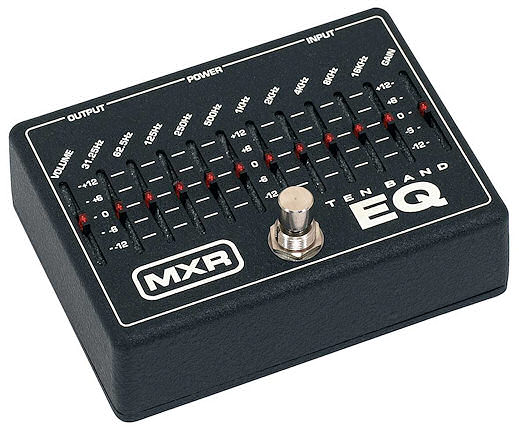
Summary
The use of poor audio equipment such as most pre-packaged earphones means most people aren't enjoying their music at its best and can't hear the difference between lossy and lossless audio or what they're missing out on.
In a nutshell, if you want your musical recordings sounding their best you should...
- Use lossless music files such as FLAC, APE or Apple Lossless.
- Don't use your mobile phone as a music player, get a proper digital audio player (DAP).
- Look at what kind of drivers earphones have - e.g. Do they have neodymium magnets? Multiple drivers? How big are they?
- Ensure both the player and earphones/headphones at the very least covers the human hearing frequency response range of 20 - 20,000Hz. Higher ratings will allow you to enjoy real instruments such as orchestral recordings closer to their original sound.
Last but not least, see if you can have a listen to the audio equipment beforehand to see if you like what you hear. Everyone's standards are different after all and unfortunately, despite all the specifications, those printed numbers can be a very rough guide - You'll still want to pay attention to the components used in audio equipment. Still, it's good to have a rough gauge for what you might be buying at least.
Hope this helps you out in picking any future audio equipment!

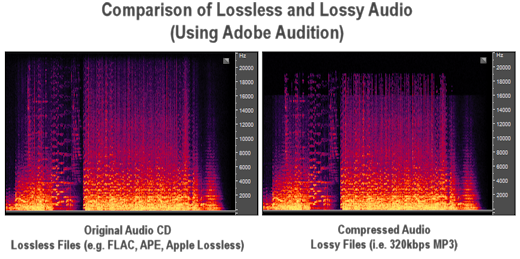
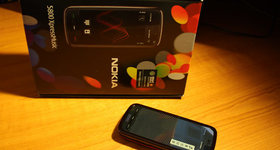
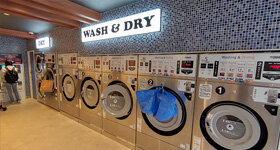

McKenna
In headphones context, if,
- the headphones' frequency response is 15Hz-22KHz,
- our hearing range is limited around 20KHz for a healthy 20 years old
- the source audio is 24-bit / 96KHz
- the DAC's output is 24/96,
is it futile to expect to hear anything above 22x2=44KHZ through the ear with the said headphones?
What about speakers with that same response range? Wouldn't we "feel" above their response?
Thanks
LY 作者
It's kind of like hearing a recording of music on low quality playback equipment compared to hearing it live from instruments or people.
Chit
Anonymous
Khiki_
but I've never comment to your blog before haha!
This entry very gooddddd >A<b++++
I like this entry <3